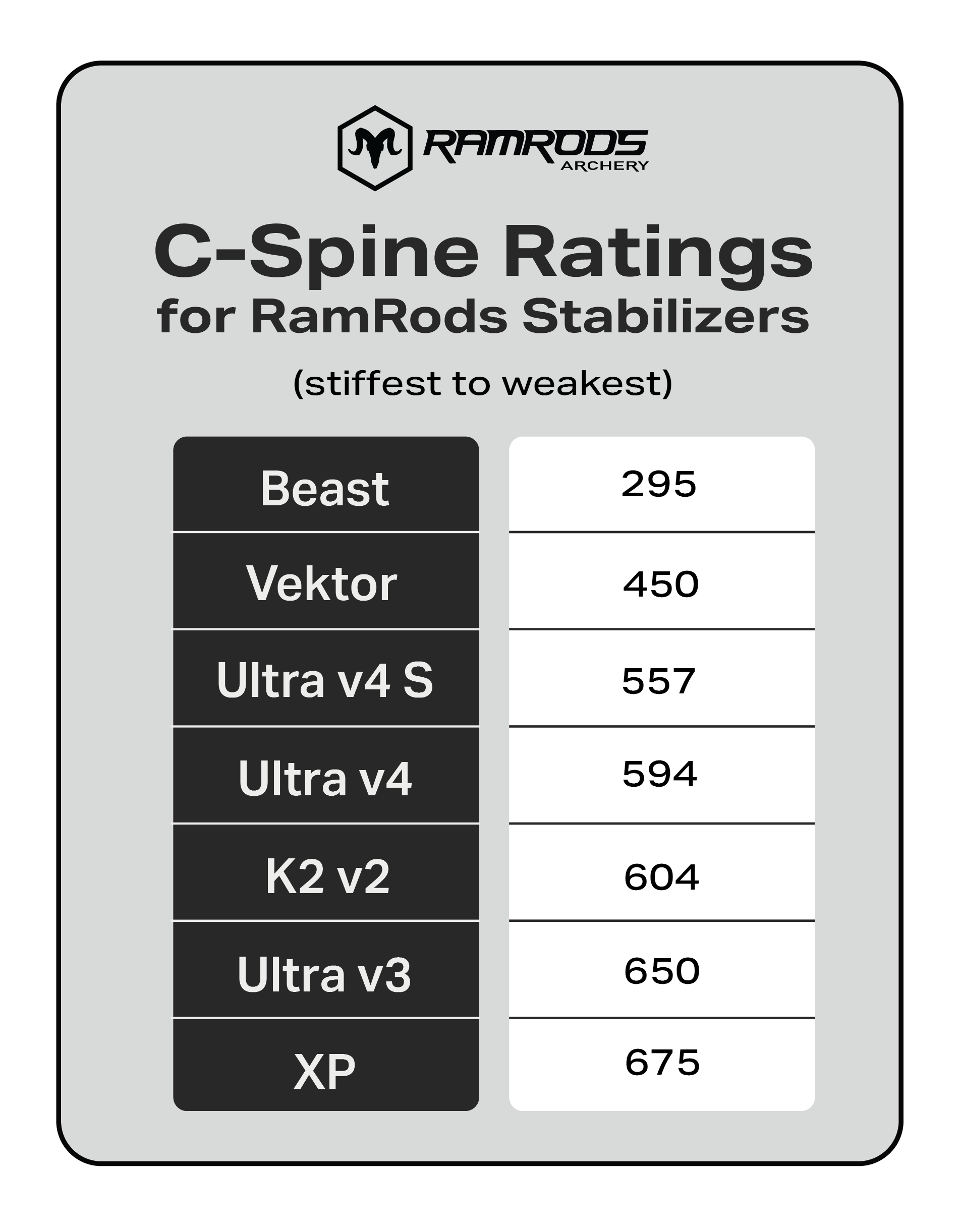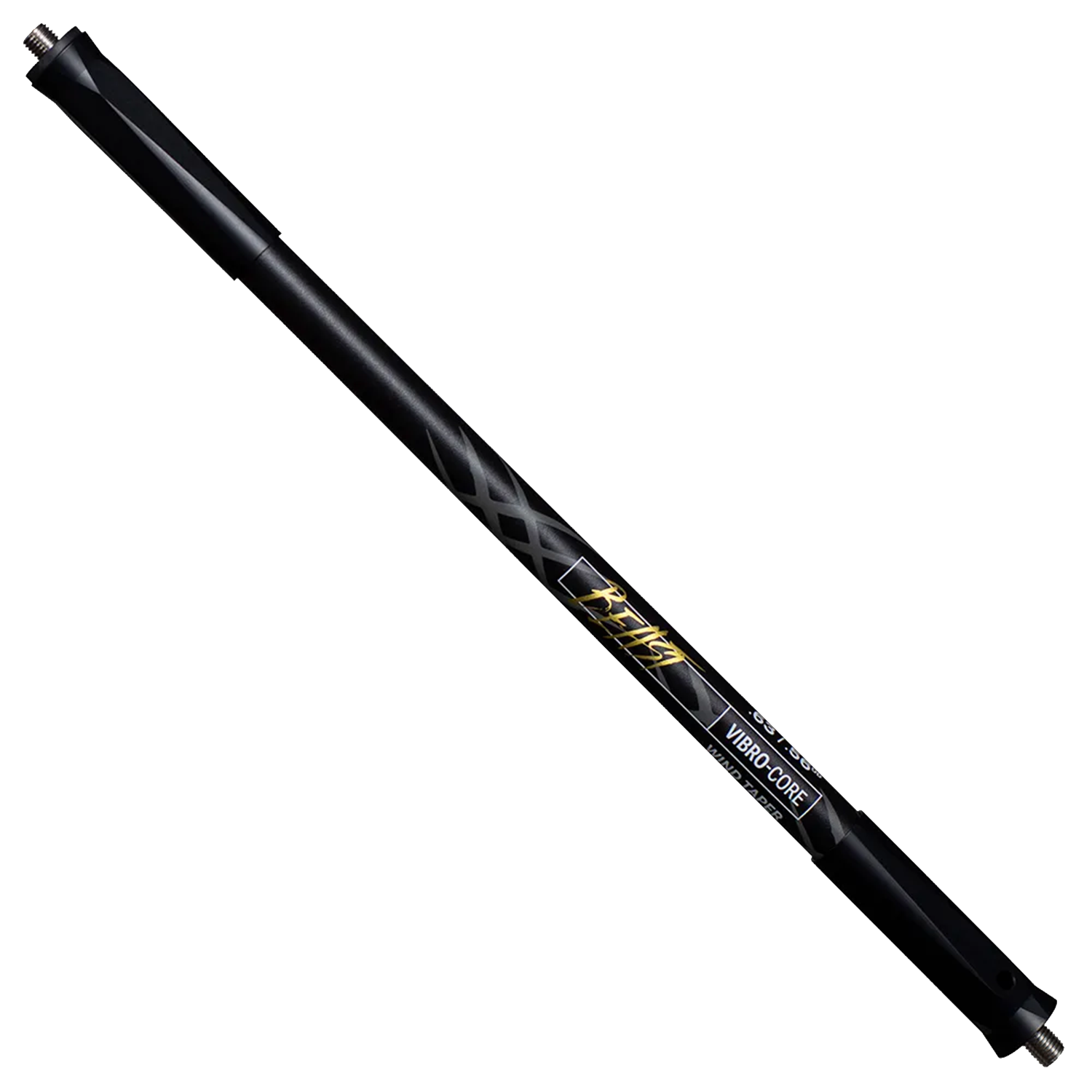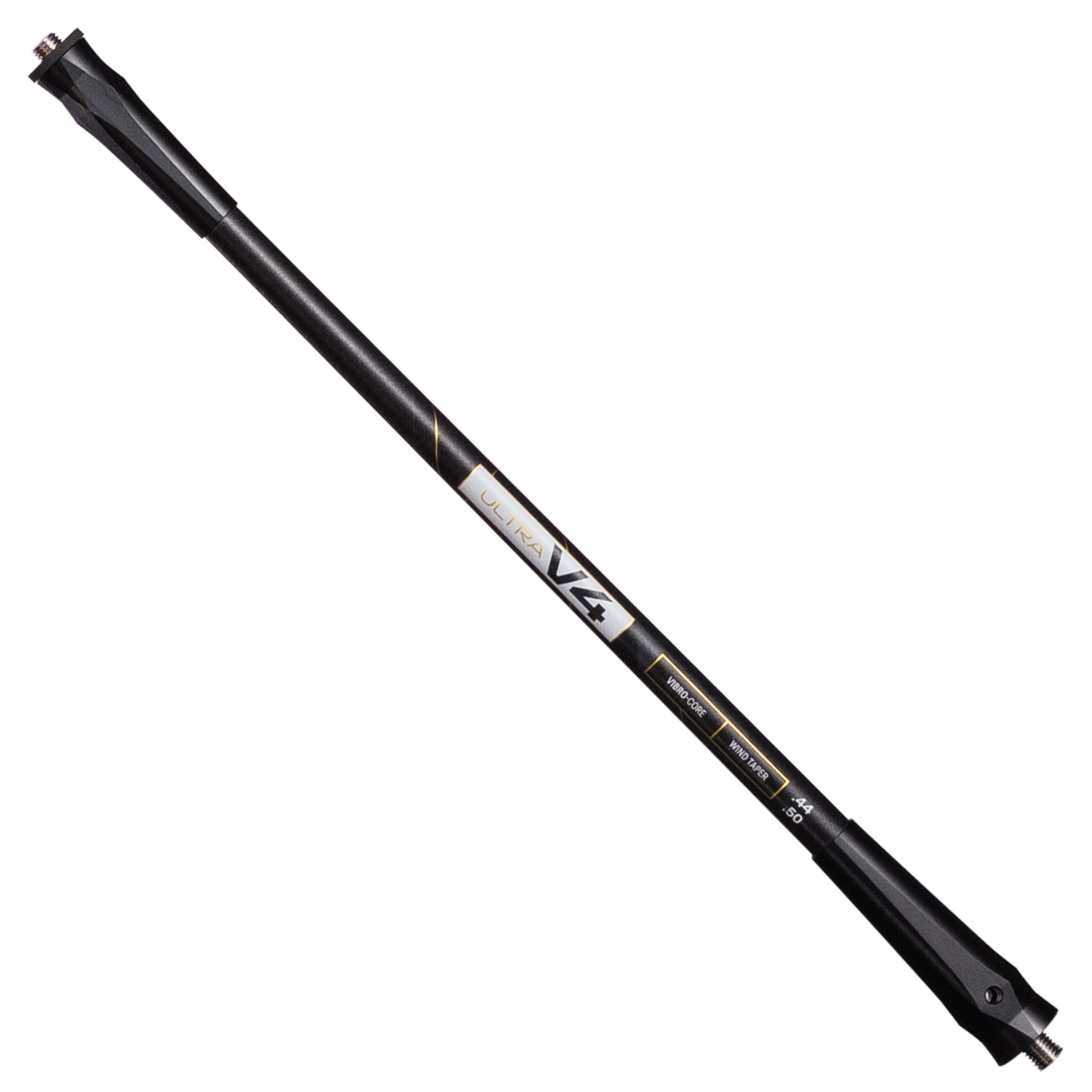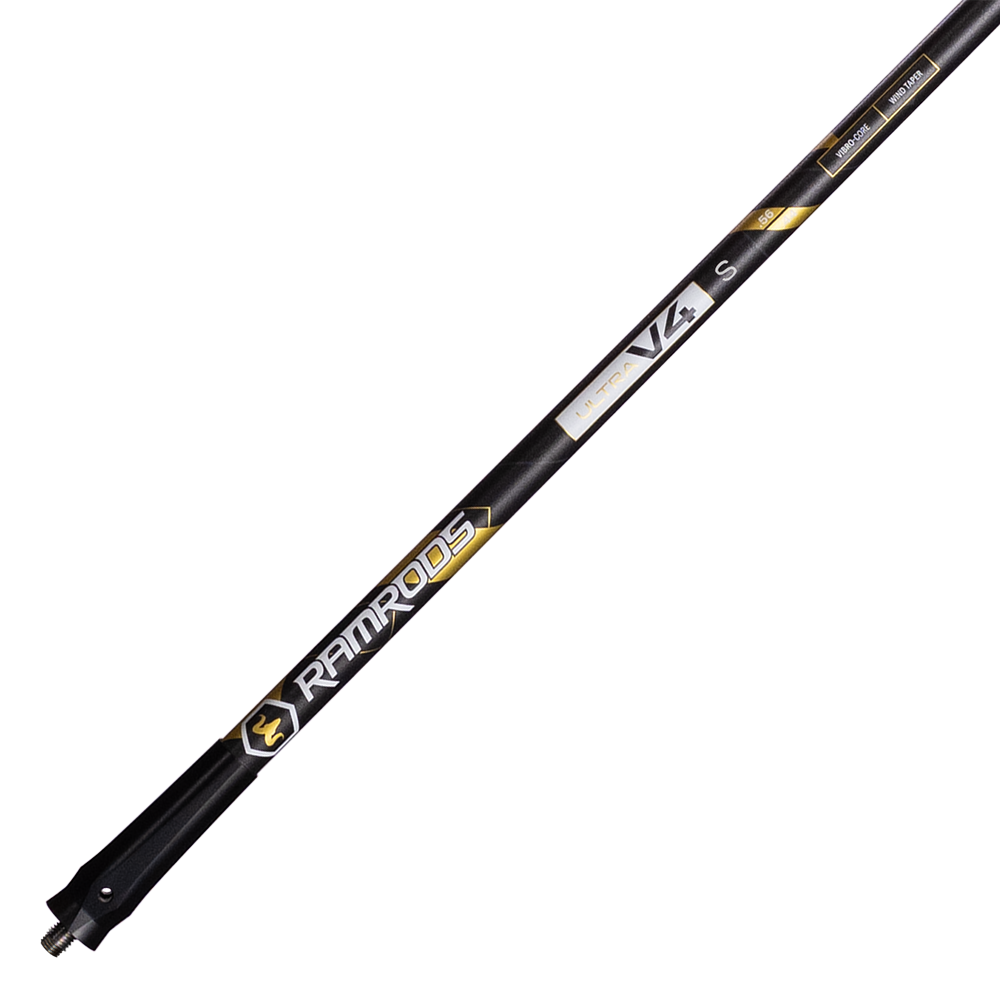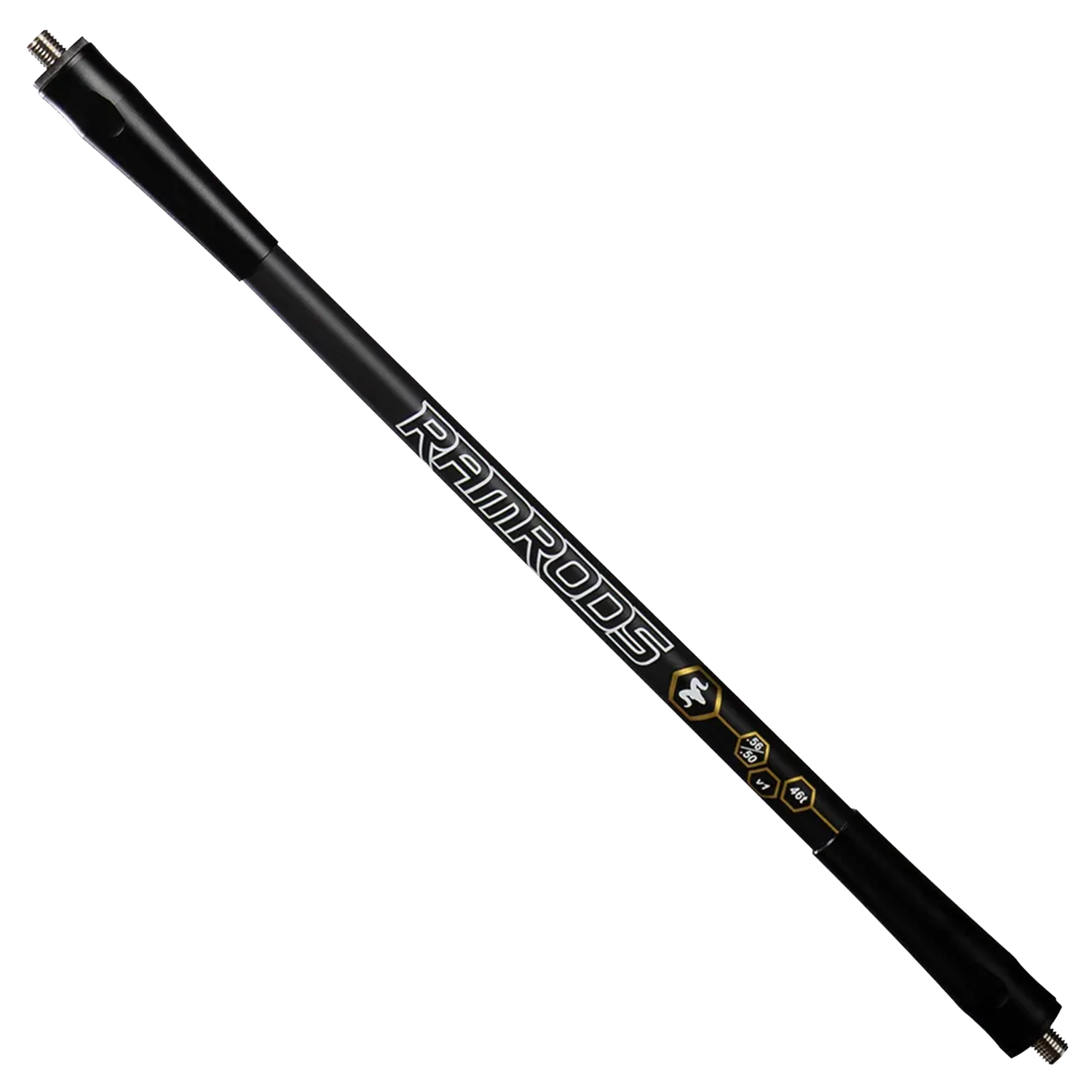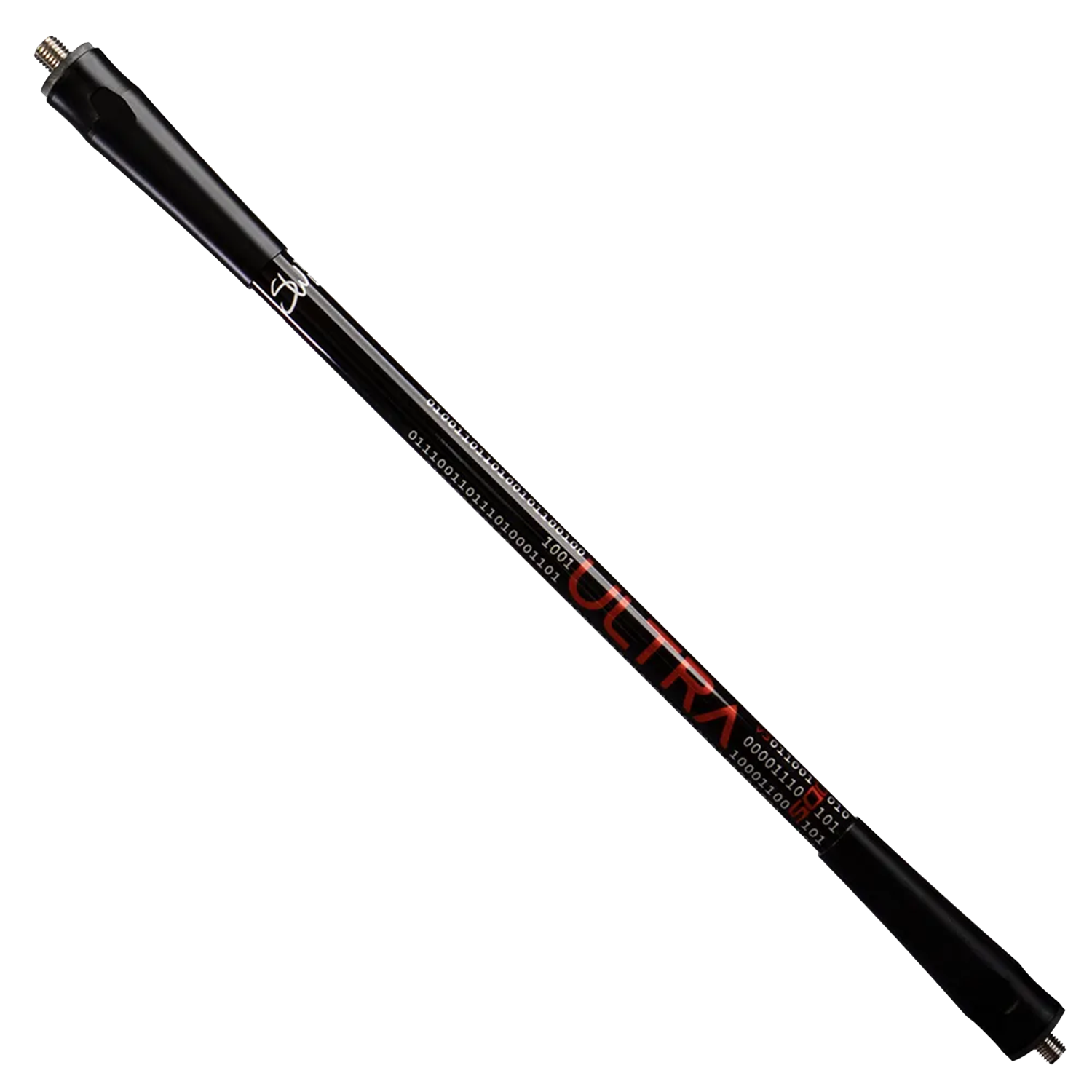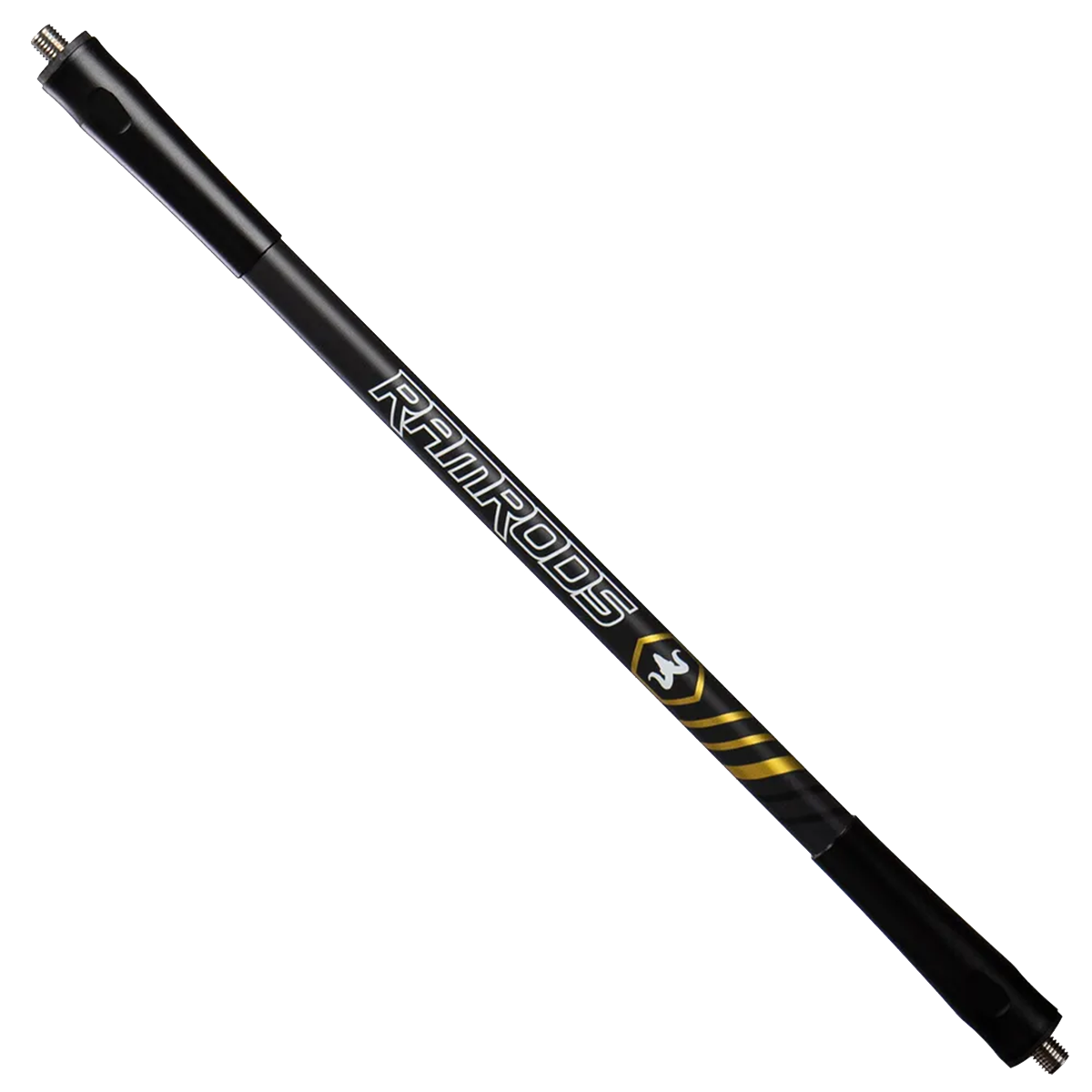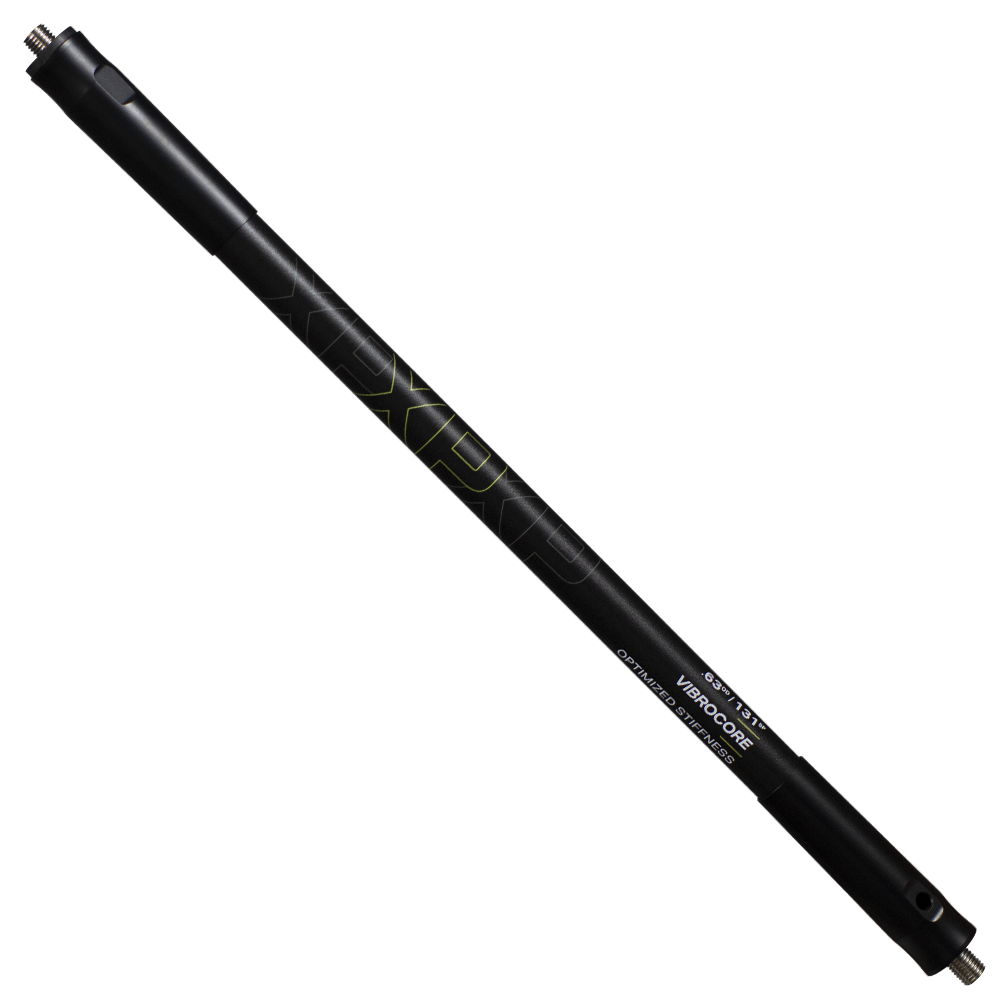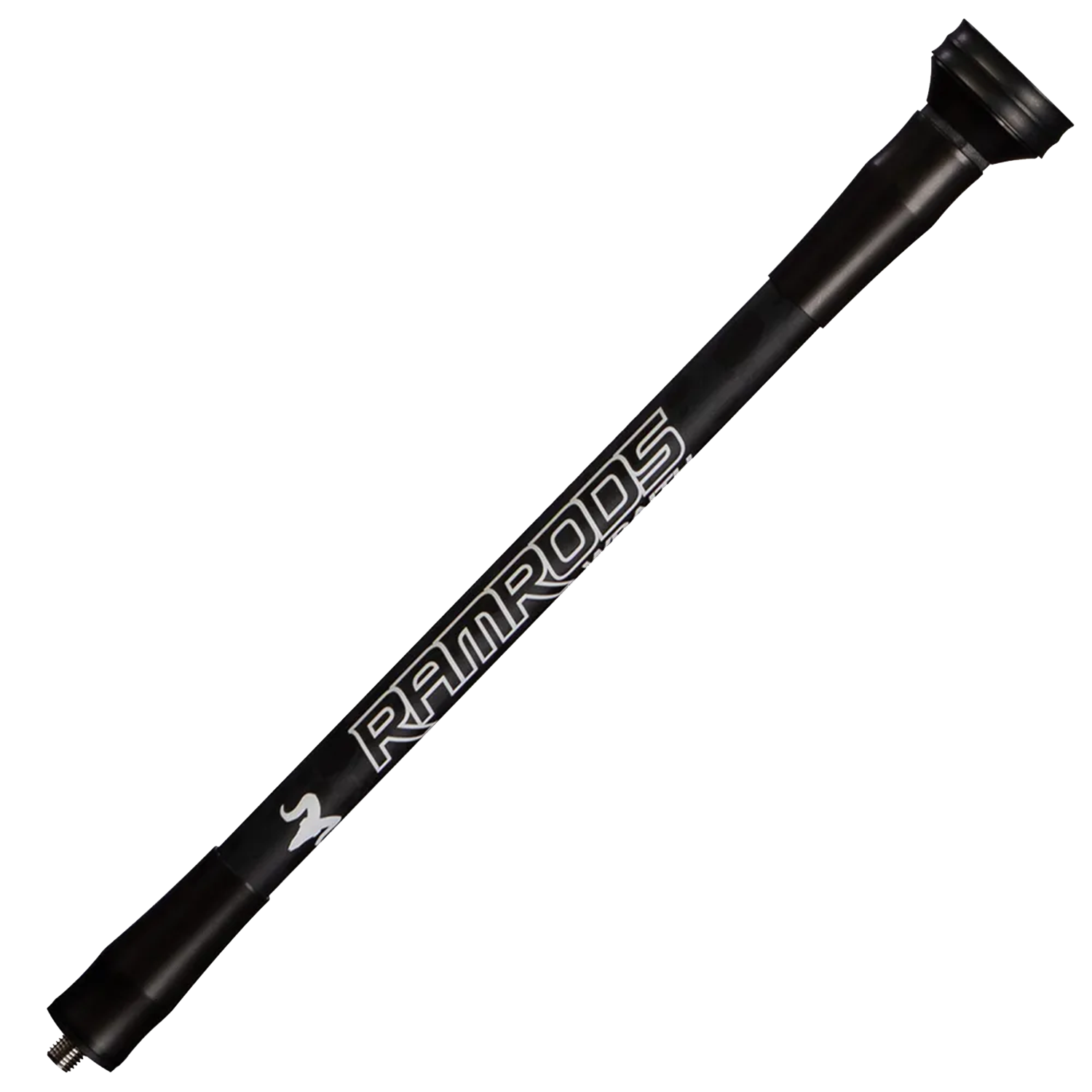When it comes to stabilizers, stiffness is one of the most important features, but how do you even measure that? There are a few different ways to evaluate a rod's spine, which is how much a stabilizer or arrow shaft flexes when weight or force is applied.
Some methods are better than others. At RamRods archery, we developed a new method we call the Cantilever Spine Test of C-Spine for short.
How did we get to a cantilever spine?
Three point bend test
Before we got to the C-Spine, we started out with the three part bend test. This is a common method of establishing a stiffness metric and is used throughout the archery industry. It involves setting up a 30 inch stabilizer and balancing it on two points at each end. From there, you add a 25 pound weight to the center, hence the three points.
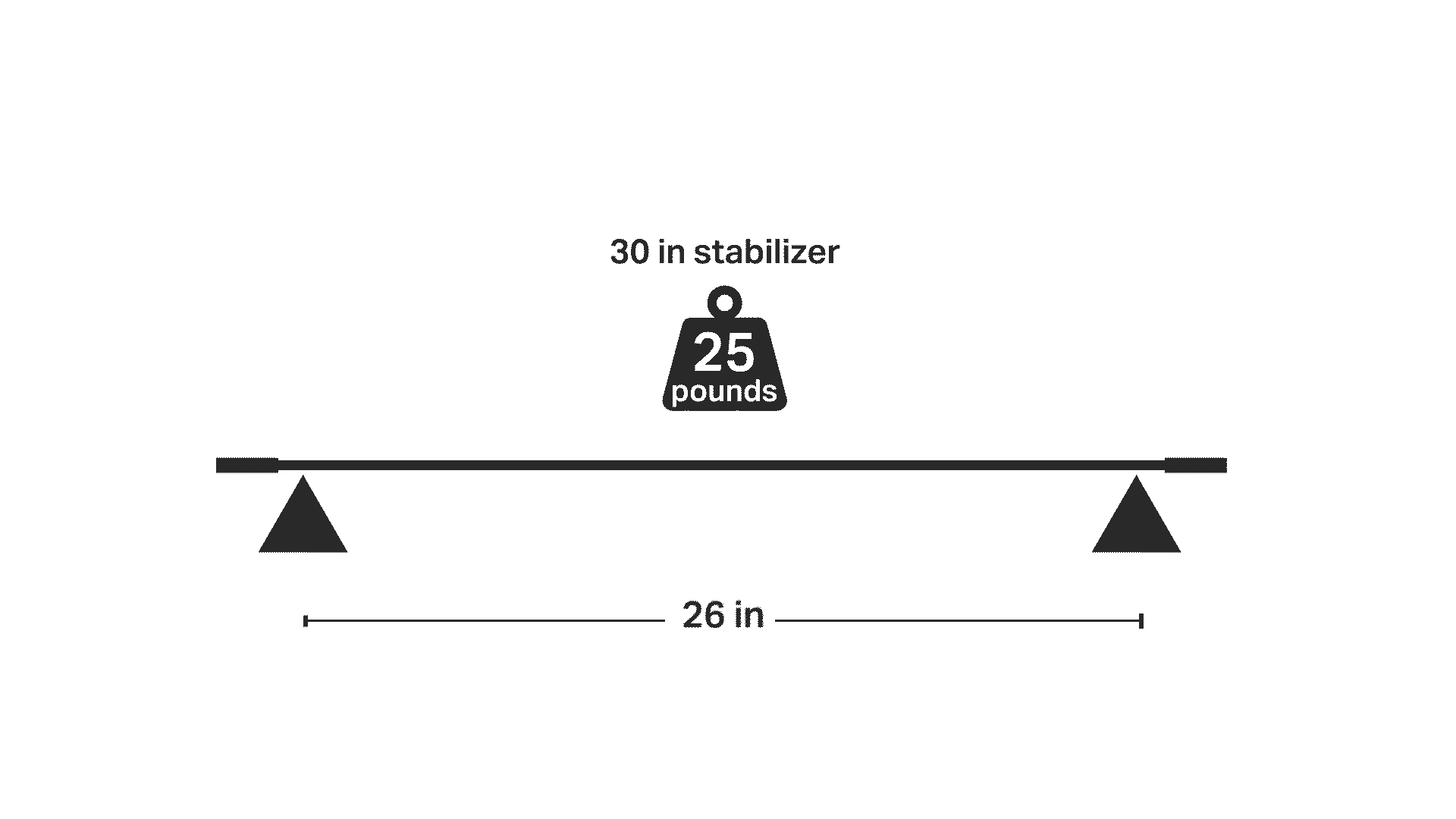
We felt that this test did not accurately replicate real-world performance when it came to determining the stiffness of a stabilizer, especially when it comes to tapered rods. When you shoot, you don't hold the rod from both ends and attach your weights in the middle. We needed a more accurate way to measure resistance to bending that was actually relevant to how a stabilizer is used. This is where C-Spine comes in.
c-spine test
In the workshop with a little tinkering, we developed a consistent and repeatable cantilever stiffness test.
We take a 30 inch stabilizer and lock down the proximal end, as if it were attached to a bow. Then at the distal end we hang 5 pounds or about 2.7kg. For reference, archers typically use between 4 - 25 ounces on the end of their front stabilizers, or between .25lb-1.5lb or 0.1kg - 0.7kg for reference.
With the 5lb on the distal end we measure exactly how much the tip of the stabilizer bends due to that weight.
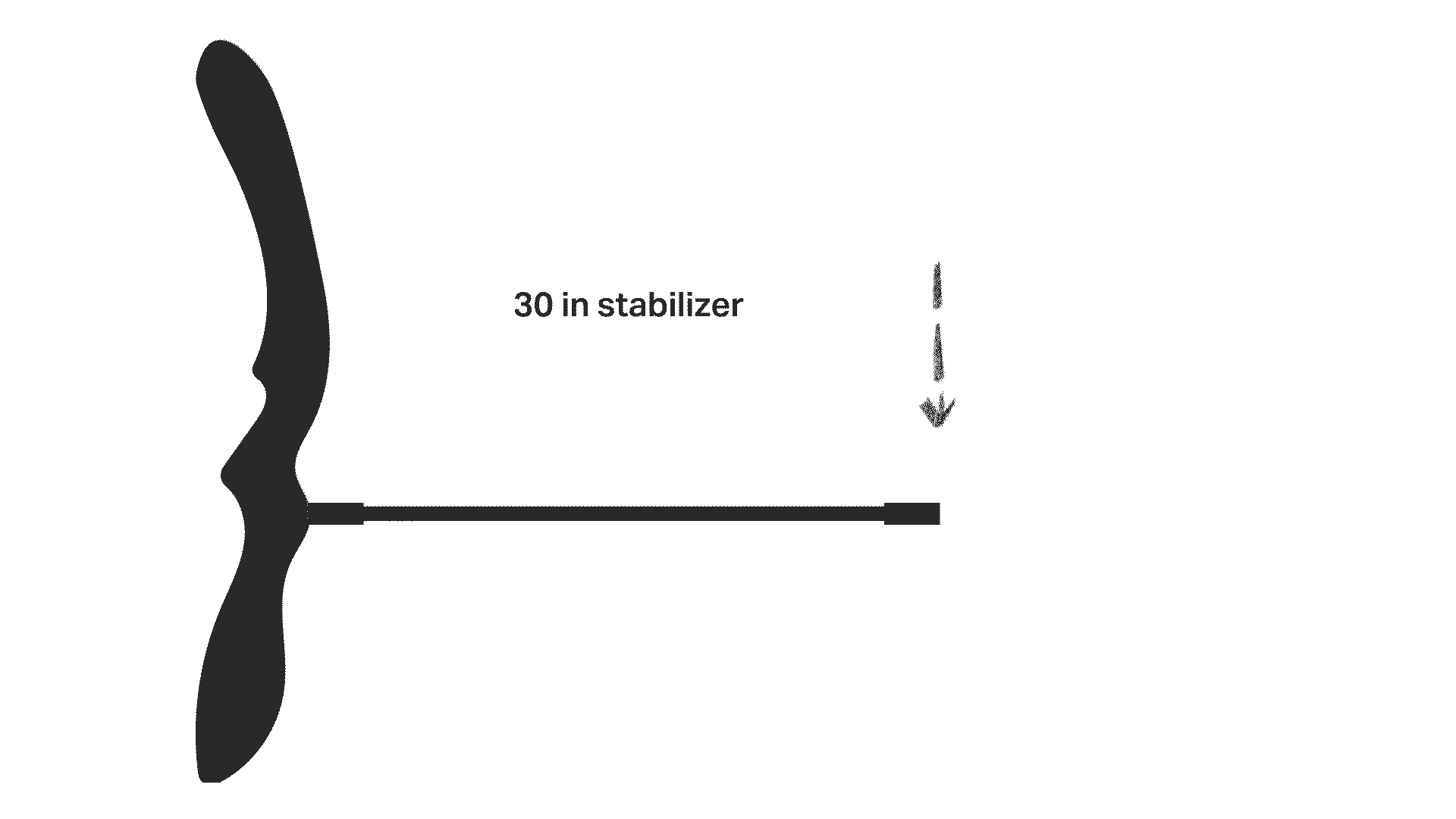
A smaller amount of bend or deflection means a lower C-spine number, and therefore a stiffer stabilizer. Higher numbers indicate more bend in the rod, which means a weaker stabilizer. In the example below, the stabilizer on the left is stiffer, with the C-Spine at 260, and the stabilizer on the right is less stiff, with the C-Spine at 725.

Quick reminder, a stiffer stabilizer isn't automatically a better stabilizer. It all depends on your needs as an archer. A compound archer that shoots a high draw weight with a large weight stack at the end of their long rod might need a stiffer stabilizer like the Beast, but a recurve archer that doesn't shoot as high a weight can benefit more from a rod with higher C-Spine, such as the K2 v2 or Ultra v4. If you're still unsure of which stabilizer is right for you, check out this breakdown of all of our rods or take this quick quiz to get a personalized result.
